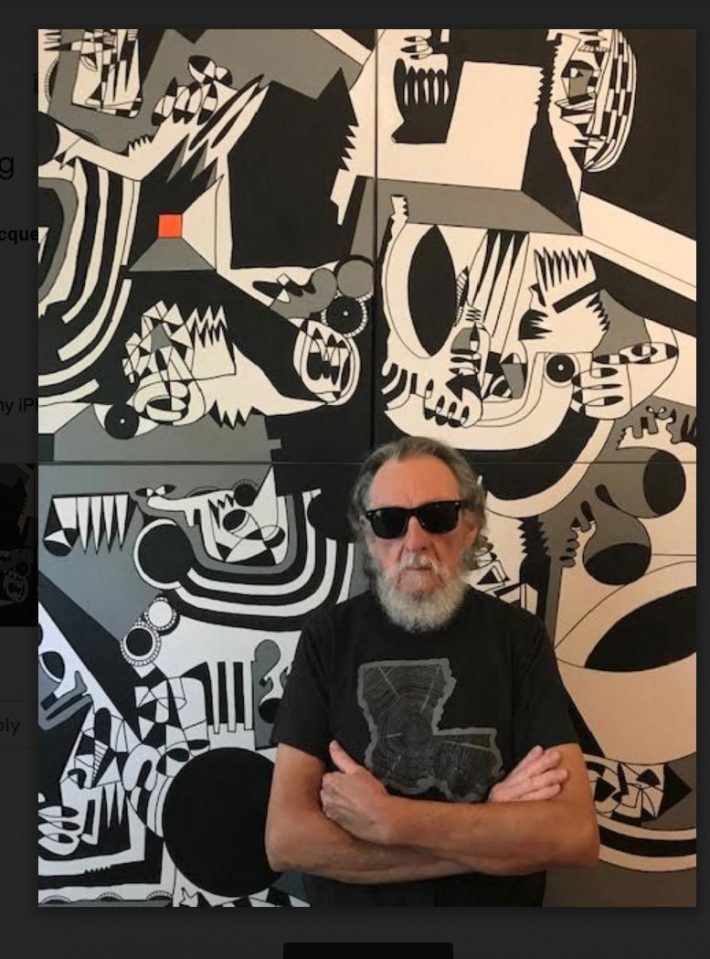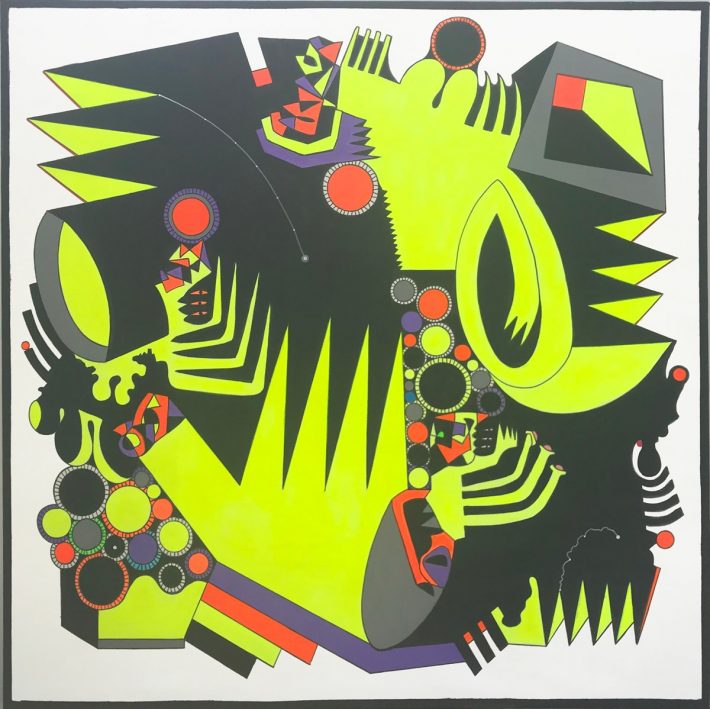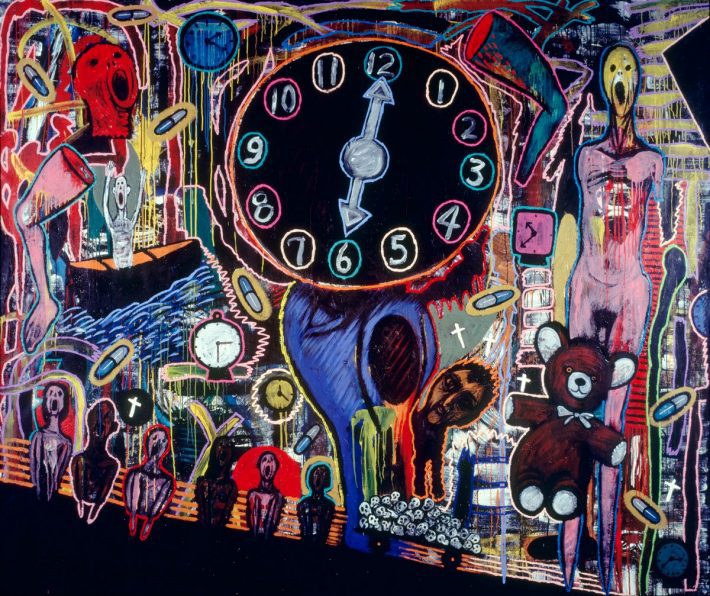For over half a century, painter Luis Cruz Azaceta has built a body of work exploring issues of the human condition
by Alexandra Kennon for Country Roads Magazine

In 1960, now-prominent seventy-eight-year-old contemporary artist Luis Cruz Azaceta was a teenager traveling to the United States for the first time, escaping Fidel Castro’s regime in Cuba. His parents sent him to live with family in New York, where he remained for the majority of thirty two years. In 1992 he and his wife Sharon Jacques, who he met during a brief tenure spent as a visiting artist at LSU in the 1980s, made their way to New Orleans where her family lived, where the couple decided to stay. “I embraced the culture of New Orleans, which is very much Caribbean,” Azaceta explained. “Feeling very much at home.”
The security of home is not something Azaceta came by easily. Upon arriving in the United States, he experienced alienation as he navigated the challenges of a language barrier. “If you don’t know the language in a given country, you feel like you are a nobody. You have no way of integrating into the society, and into the culture,” Azaceta said in an interview for the Phoenix Art Museum. “That’s why I think I became an artist. It gave me a weapon to express myself, to express whatever I feel, and put it down on canvas.”

His formative teenage memory of crossing the Caribbean in pursuit of a better life of course remains strong and vivid, and continues to make appearances in his art. “I’ve been addressing immigration for many years in my work. I’ve been making paintings and drawings based on the horror and hope [of immigrants] to go across the Caribbean in make-shift boats and inner tubes, escaping their condition to reach freedom without hardly any water or food, instruments of navigation, and in waters infested with sharks,” Azaceta said. “According to the American Coast Guard, one-third of the people perish in the crossing.”

Azaceta works not just with paint and canvas, but with intuition. At the outset of a project, he does not know how it will turn out, or what it will become. Azaceta’s feelings—about a wide range of globally-pressing societal and political issues even besides immigration—are extensive and profound. While 2020 has been a particularly pressing year, Azaceta’s commitment to addressing such matters in his work has already spanned half a century. “I’ve been creating works of art dealing with the human condition for over fifty years,” he told me. “Themes addressing violence, injustice, dictatorships, war, immigration, refugees, identity, racism, the Aids Epidemic, and death.”
“MY WORK, WHETHER IT IS FIGURATION, ABSTRACTION, OR A COMBINATION OF THE TWO, IS USED TO CONVEY THE MOST BOLD STATEMENT THAT THE CONTENT REQUIRES.”
—LUIS CRUZ AZACETA
The intent of Azaceta’s work goes far beyond the colorful and imaginative shapes in his large-format paintings. Described once as a “devotee of visual experiment,” and at one point self-identifying his work as “apocalyptic pop,” the images he creates are abstract, often-geometric, and as complex aesthetically as his feelings surrounding the subjects he addresses. In the mid-1980s he created paintings that dealt with the AIDs and HIV epidemic. Now, in the year of the Coronavirus pandemic, they are as salient as ever. But that has not stopped Azaceta, who is quite prolific, from creating new work focusing on today’s crises. “Currently I’m working on a series dealing with the pandemic crisis and the unrest it has caused in this country, like I did back in the mid-eighties with the Aids Epidemic-HIV crisis, where I lost a lot of friends,” he said.

Most recently, two of his paintings—“CRISIS 2” and “Light at the End of the Abyss”—are currently included in the Contemporary Art Center in New Orleans’ landmark exhibition Make America What America Must Become, which is not a reference to what you’re likely assuming, but rather is a direct quotation from a letter written by philosopher and commentator James Baldwin to his nephew on the hundred-year-anniversary of the Emancipation Proclamation. Another recent painting titled “CRISIS 3” currently hangs in the Louisiana Contemporary exhibition at the Ogden Museum of Southern Art. Each painting is as bold in intent as in color and style. “My work, whether it is figuration, abstraction, or a combination of the two, is used to convey the most bold statement that the content requires,” Azaceta emphasized.
Though topics of disease, exile, and political strife are certainly heavy in Azaceta’s body of work, hope for the future is a strong thematic rope binding his diverse array of paintings from his long and successful career. “In my work I try to present compassion, and hope for a better world.”
Visit Make America What America Must Become at the Contemporary Arts Center until January 24 2021 or Louisiana Contemporary at the Ogden until February 7, 2021.
Curator of the Ogden Museum of Southern Art Bradley Sumrall is curating a survey of Azaceta’s work titled What A Wonderful World that will run March 6–July 2021. luiscruzazaceta-art.com
Azaceta is represented by Arthur Roger Gallery in New Orleans.
